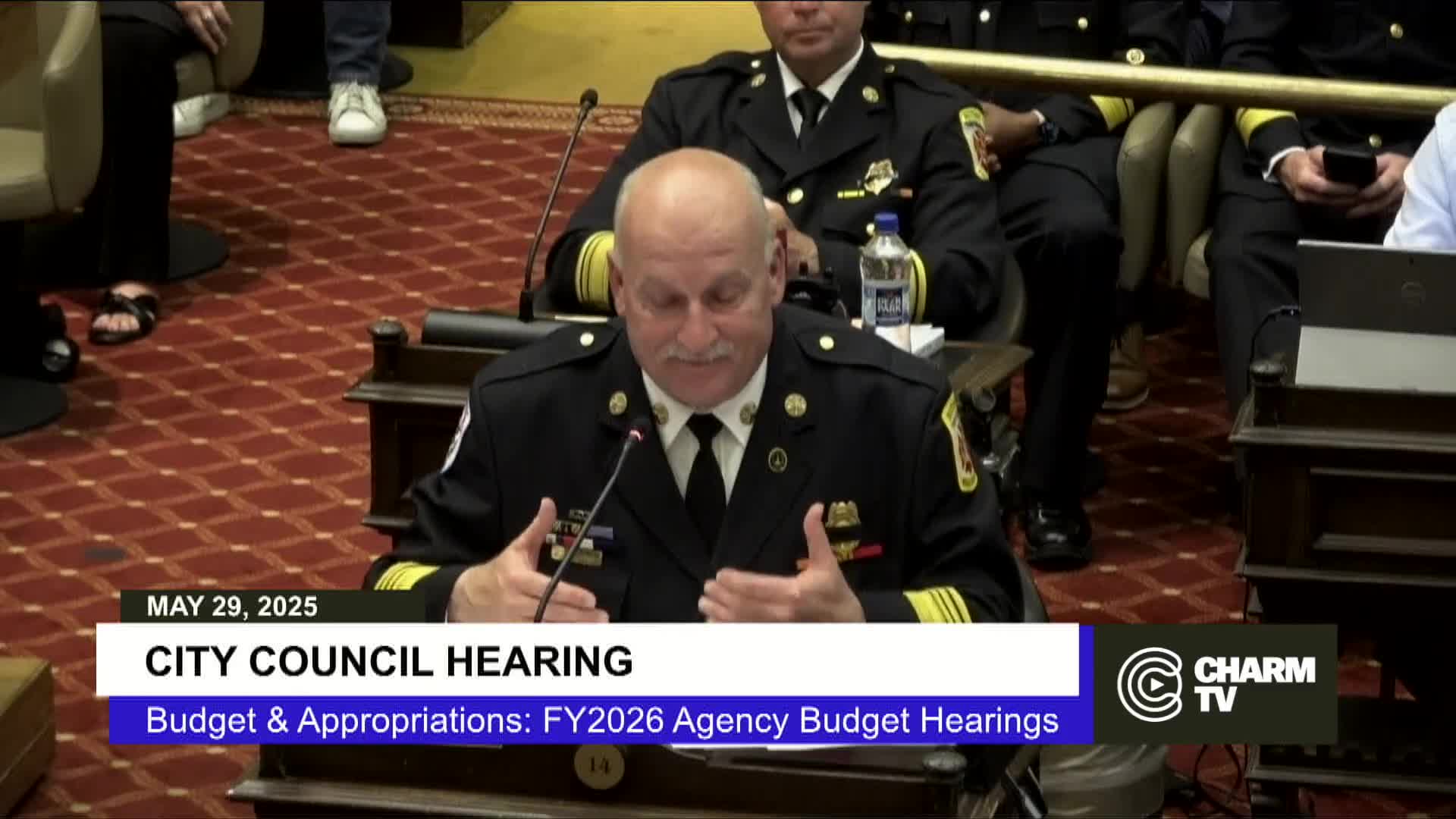Baltimore enhances EMT training with local college partnerships and tuition reimbursement
May 30, 2025 | Baltimore City, Baltimore County, Maryland
This article was created by AI summarizing key points discussed. AI makes mistakes, so for full details and context, please refer to the video of the full meeting. Please report any errors so we can fix them. Report an error »

In the heart of Baltimore's city hall, a pivotal discussion unfolded during the City Council Hearing on the FY2026 Budget, focusing on the future of the city's emergency medical services (EMS). As the meeting progressed, officials highlighted the challenges and opportunities facing the Baltimore City Fire Department (BCFD) and the Office of Emergency Management (OEM) in recruiting and training new emergency medical technicians (EMTs) and paramedics.
The conversation began with a stark acknowledgment of the evolving landscape of EMS training. "It's a lot harder than what it used to be," one official noted, emphasizing the rigorous curriculum that now defines the path to becoming a paramedic. With the state governing board requiring approximately 1,800 hours of training for paramedics, the commitment is substantial. This shift has made recruitment increasingly challenging, particularly in the wake of the pandemic, which saw class sizes plummet from 30-40 students to just 5.
To combat these issues, the city is implementing innovative strategies to attract new talent. One key initiative is the introduction of tuition reimbursement for local colleges, aimed at easing the financial burden on prospective EMTs. "If we get them into that, we have tuition reimbursement, then it's just a matter of scheduling," an official explained, highlighting the importance of aligning course schedules with work commitments. This approach not only supports current EMTs seeking advancement but also serves as a recruitment tool for new candidates.
The city has already seen some success with its cohort programs, where existing EMTs are encouraged to pursue paramedic training. From the first cohort, 6 to 7 paramedics emerged, although some transitioned to other roles within the department, creating a need for ongoing recruitment efforts. Currently, a second cohort is underway, with 14 participants, but the path to becoming a paramedic remains a long-term investment.
As the council members deliberated, they recognized the necessity of adapting to the changing demands of emergency services. "We're having to do things smarter, more effective, more innovative," one official remarked, pointing to the integration of telemedicine and population health initiatives as part of the department's forward-thinking strategy.
The discussions at the City Council Hearing underscored a critical moment for Baltimore's EMS services. With a commitment to enhancing training and recruitment, the city is poised to strengthen its emergency response capabilities, ensuring that its first responders are well-equipped to meet the challenges of the future. As the meeting concluded, the sense of urgency was palpable—this is not just about filling positions; it’s about investing in the safety and well-being of the entire community.
The conversation began with a stark acknowledgment of the evolving landscape of EMS training. "It's a lot harder than what it used to be," one official noted, emphasizing the rigorous curriculum that now defines the path to becoming a paramedic. With the state governing board requiring approximately 1,800 hours of training for paramedics, the commitment is substantial. This shift has made recruitment increasingly challenging, particularly in the wake of the pandemic, which saw class sizes plummet from 30-40 students to just 5.
To combat these issues, the city is implementing innovative strategies to attract new talent. One key initiative is the introduction of tuition reimbursement for local colleges, aimed at easing the financial burden on prospective EMTs. "If we get them into that, we have tuition reimbursement, then it's just a matter of scheduling," an official explained, highlighting the importance of aligning course schedules with work commitments. This approach not only supports current EMTs seeking advancement but also serves as a recruitment tool for new candidates.
The city has already seen some success with its cohort programs, where existing EMTs are encouraged to pursue paramedic training. From the first cohort, 6 to 7 paramedics emerged, although some transitioned to other roles within the department, creating a need for ongoing recruitment efforts. Currently, a second cohort is underway, with 14 participants, but the path to becoming a paramedic remains a long-term investment.
As the council members deliberated, they recognized the necessity of adapting to the changing demands of emergency services. "We're having to do things smarter, more effective, more innovative," one official remarked, pointing to the integration of telemedicine and population health initiatives as part of the department's forward-thinking strategy.
The discussions at the City Council Hearing underscored a critical moment for Baltimore's EMS services. With a commitment to enhancing training and recruitment, the city is poised to strengthen its emergency response capabilities, ensuring that its first responders are well-equipped to meet the challenges of the future. As the meeting concluded, the sense of urgency was palpable—this is not just about filling positions; it’s about investing in the safety and well-being of the entire community.
View full meeting
This article is based on a recent meeting—watch the full video and explore the complete transcript for deeper insights into the discussion.
View full meeting
